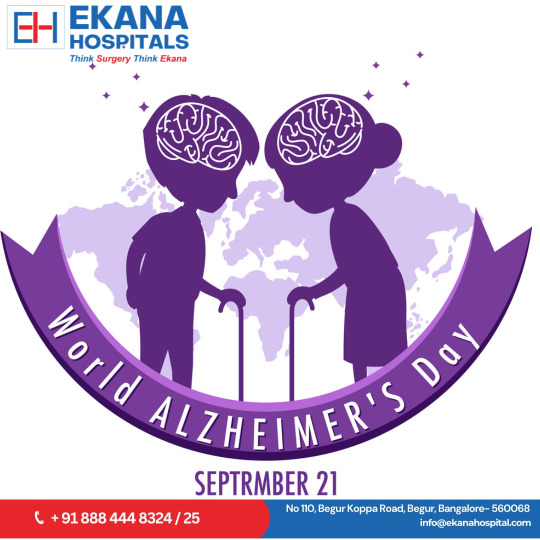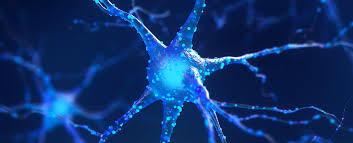#alzheimersdisease
Text
Predicting Alzheimer's With Machine Learning
Alzheimer's disease is a progressive neurodegenerative disorder that affects millions of people worldwide. Early diagnosis is crucial for managing the disease and potentially slowing its progression. My interest in this area is deeply personal. My great grandmother, Bonnie, passed away from Alzheimer's in 2000, and my grandmother, Jonette, who is Bonnie's daughter, is currently exhibiting symptoms of the disease. This personal connection has motivated me to apply my skills as a data scientist to contribute to the ongoing research in Alzheimer's disease.
Model Creation
The first step in creating the model was to identify relevant features that could potentially influence the onset of Alzheimer's disease. After careful consideration, I chose the following features: Mini-Mental State Examination (MMSE), Clinical Dementia Rating (CDR), Socioeconomic Status (SES), and Normalized Whole Brain Volume (nWBV).
MMSE: This is a commonly used test for cognitive function and mental status. Lower scores on the MMSE can indicate severe cognitive impairment, a common symptom of Alzheimer's.
CDR: This is a numeric scale used to quantify the severity of symptoms of dementia. A higher CDR score can indicate more severe dementia.
SES: Socioeconomic status has been found to influence health outcomes, including cognitive function and dementia.
nWBV: This represents the volume of the brain, adjusted for head size. A decrease in nWBV can be indicative of brain atrophy, a common symptom of Alzheimer's.
After selecting these features, I used a combination of Logistic Regression and Random Forest Classifier models in a Stacking Classifier to predict the onset of Alzheimer's disease. The model was trained on a dataset with these selected features and then tested on a separate dataset to evaluate its performance.
Model Performance
To validate the model's performance, I used a ROC curve plot (below), as well as a cross-validation accuracy scoring mechanism.
The ROC curve (Receiver Operating Characteristic curve) is a plot that illustrates the diagnostic ability of a model as its discrimination threshold is varied. It is great for visualizing the accuracy of binary classification models. The curve is created by plotting the true positive rate (TPR) against the false positive rate (FPR) at various threshold settings.

The area under the ROC curve, often referred to as the AUC (Area Under the Curve), provides a measure of the model's ability to distinguish between positive and negative classes. The AUC can be interpreted as the probability that the model will rank a randomly chosen positive instance higher than a randomly chosen negative one.
The AUC value ranges from 0 to 1. An AUC of 0.5 suggests no discrimination (i.e., the model has no ability to distinguish between positive and negative classes), 1 represents perfect discrimination (i.e., the model has perfect ability to distinguish between positive and negative classes), and 0 represents total misclassification.
The model's score of an AUC of 0.98 is excellent. It suggests that the model has a very high ability to distinguish between positive and negative classes.
The model also performed extremely well in another test, which showed the model has a final cross-validation score of 0.953. This high score indicates that the model was able to accurately predict the onset of Alzheimer's disease based on the selected features.
However, it's important to note that while this model can be a useful tool for predicting Alzheimer's disease, it should not be the sole basis for a diagnosis. Doctors should consider all aspects of diagnostic information when making a diagnosis.
Conclusion
The development and application of machine learning models like this one are revolutionizing the medical field. They offer the potential for early diagnosis of neurodegenerative diseases like Alzheimer's, which can significantly improve patient outcomes. However, these models are tools to assist healthcare professionals, not replace them. The human element in medicine, including a comprehensive understanding of the patient's health history and symptoms, remains crucial.
Despite the challenges, the potential of machine learning models in improving early diagnosis leaves me and my family hopeful. As we continue to advance in technology and research, we move closer to a world where diseases like Alzheimer's can be effectively managed, and hopefully, one day, cured.
#alzheimersresearch#alzheimersdisease#dementia#neurology#machinelearning#ai#artificialintelligence#aicommunity#datascience#datascientist#healthcare#medicalresearch#programming#python programming#python#python 3
54 notes
·
View notes
Photo

Smartphone App Detects Early-Onset Dementia: A Breakthrough Study | www.ceboz.com
A groundbreaking smartphone app detects early signs of frontotemporal dementia, offering hope for earlier interventions and improved patient outcomes.
0 notes
Link
Our latest blog will help you navigate in We will discuss the sensitive and essential aspects to consider when planning for the future with Alzheimer's in mind. with compassion and care. https://bit.ly/3RGcEG6
0 notes
Text
China Becomes the Country With the Highest Number of Alzheimer’s Patients in the World
#alzheimer#lifestyle#dementia#alzheimers#alzheimersawareness#mentalhealth#alzheimerscare#alzheimerssymptoms#alzheimerstreatment#alzheimersdisease#health#disease
0 notes
Text

Today is #WorldAlzheimersDay, dedicated to raising awareness, educating the masses, and dispelling the myths surrounding dementia. We all have cherished memories that define us, and it's our collective duty to ensure that those living with Alzheimer's continue to feel valued and understood. 🤝
🌈 Join Hands. Make a Difference 🌈
Alzheimer's affects not only those diagnosed; it impacts families, friends, and entire communities. Let's unite in a wave of support and understanding because every memory matters, every moment counts, and every person deserves a lifetime of dignity and respect. 🙌✨
This is an initiative from the makers of Hetriva. Join us and share this post to spread the word, and let's build a world more accommodating and informed about Alzheimer's and dementia. 🌍💜
#WorldAlzheimersDay#Alzheimers#AlzheimersAwareness#AlzheimersSociety#Alzheimerssucks#AlzheimersDisease#AlzheimersCare#AlzheimerDementia#HeteroHealthcare
0 notes
Text

Alzheimer's disease is a brain disorder that slowly destroys memory and thinking skills and, eventually, the ability to carry out the simplest tasks.
CONTACT - 8884448324/25/28 TO MEET OUR EXPERTS
LOCATION- 110, BEGUR KOPPA ROAD, BEGUR, BANGALORE-560068
#ekanahospital#begur#alzheimers#dementia#alzheimersawareness#caregiver#seniorcare#dementiacare#caregiving#dementiaawareness#alzheimersdisease#elderlycare#eldercare#seniorliving#homecare#alzheimersassociation#endalz#assistedliving#alzheimer#healthcare#caregivers#health#caregiversupport#elderly#care#memorycare#aging#love#alzheimerscare#family
0 notes
Text
New protein found to improve brain health and reduce Alzheimer's symptoms
#alzheimersdisease #brain #brainhealth #dementia #Platelet
0 notes
Photo

Blocking a Key Protein Could Halt Alzheimer's Progress | CeBoz.com
Scientists have discovered a protein that may slow or stop Alzheimer's disease by preserving brain cell communication.
0 notes
Text
New protein found to improve brain health and reduce Alzheimer's symptoms
#alzheimersdisease #brain #brainhealth #dementia #Platelet
0 notes
Text
Engaging with Patients with Alzheimer’s Disease
Trying to communicate with someone suffering from Alzheimer’s Disease is a challenge and can be frustrating for both the caregiver and the patient. Neurology Associates in Leesburg Virginia offers tips to engage more with patients with Alzheimer’s Disease.
Read more at Neurology Associates:
0 notes